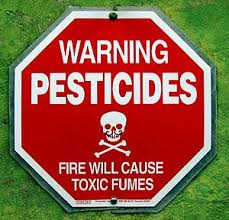
What a difference a few years makes in medical opinion in how appendicitis should be treated! Not routinely with surgery (appendectomy), but trying a course of antibiotics first.
Researchers from Duke University Medical Center reviewed studies and found that antibiotics successfully treat up to 70% of uncomplicated appendicitis cases. For this reason the researchers state that antibiotics should be tried first in uncomplicated appendicitis cases. And if needed (e.g., if there are recurrences of appendicitis) surgery can be done.
Back in 2015 a Finnish study found that antibiotics alone can treat the majority of cases of uncomplicated appendicitis in adults. No need for surgery. That same year another study was published finding antibiotics to be a successful treatment for uncomplicated appendicitis in children - and that at one year follow-up 75.6% of the antibiotics group had not had any recurrences of appendicitis.
This is a major shift in how to treat an ailment, and it happened quickly. Most people with appendicitis would definitely (probably) opt for a course of antibiotics rather than surgery and see if that works..
From Science Daily: Antibiotics can be first-line therapy for uncomplicated appendicitis cases
With numerous recent studies demonstrating that antibiotics work as well as surgery for most uncomplicated appendicitis cases, the non-surgical approach can now be considered a routine option, according to a review article in JAMA. ...continue reading "Treating Appendicitis With Antibiotics"




 Congratulations America! The contiguous (lower 48 states) United States just had its hottest summer ever! This is not something to brag about, but a taste of coming attractions due to climate change. This year we've had heat wave after heat wave, drought in the west, humid tropical-type heat in the east, hurricanes, tornadoes, tropical storms, and so on. Whew...
Congratulations America! The contiguous (lower 48 states) United States just had its hottest summer ever! This is not something to brag about, but a taste of coming attractions due to climate change. This year we've had heat wave after heat wave, drought in the west, humid tropical-type heat in the east, hurricanes, tornadoes, tropical storms, and so on. Whew... It's finally over. One hundred years after leaded gasoline was first introduced, it is finally no longer used in automobiles and road vehicles anywhere in the world. Algeria was the last country to use leaded gas (it had stockpiles of it and wanted to use it up), and in July 2021 they made the switch to unleaded gas. Finally.
It's finally over. One hundred years after leaded gasoline was first introduced, it is finally no longer used in automobiles and road vehicles anywhere in the world. Algeria was the last country to use leaded gas (it had stockpiles of it and wanted to use it up), and in July 2021 they made the switch to unleaded gas. Finally. It's the last full week of August, with sweltering heat and humidity. These are basically the only flowers left that the deer haven't eaten and destroyed.
It's the last full week of August, with sweltering heat and humidity. These are basically the only flowers left that the deer haven't eaten and destroyed. Finally, finally... the US Environmental Protection Agency (EPA) is banning the use of the pesticide chlorpyrifos on food crops. This is important because we get exposed to the pesticide various ways, but especially from pesticide residues on food. This pesticide should have been banned years ago for the reason that it is dangerous for children - has neurological effects and lowers IQ.
Finally, finally... the US Environmental Protection Agency (EPA) is banning the use of the pesticide chlorpyrifos on food crops. This is important because we get exposed to the pesticide various ways, but especially from pesticide residues on food. This pesticide should have been banned years ago for the reason that it is dangerous for children - has neurological effects and lowers IQ.
 Recently there have been studies finding health benefits from daily coffee consumption, and some finding possible harm. Overall, it seems like moderate intake is OK and beneficial for adults, but too much (over 6 cups daily) may cause harm. And avoid drinking
Recently there have been studies finding health benefits from daily coffee consumption, and some finding possible harm. Overall, it seems like moderate intake is OK and beneficial for adults, but too much (over 6 cups daily) may cause harm. And avoid drinking